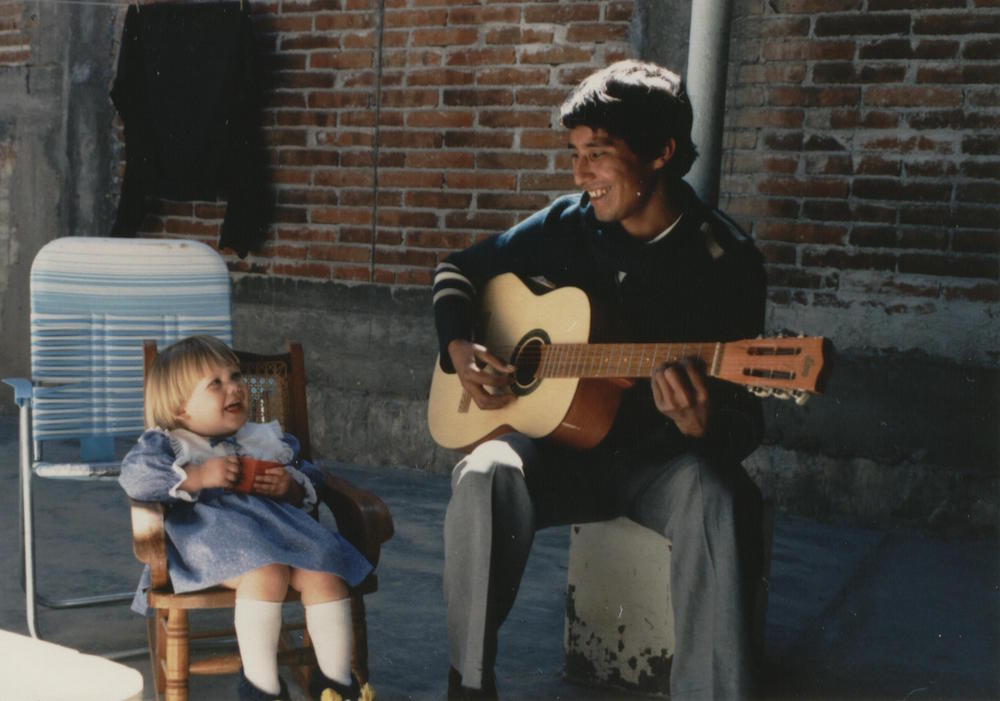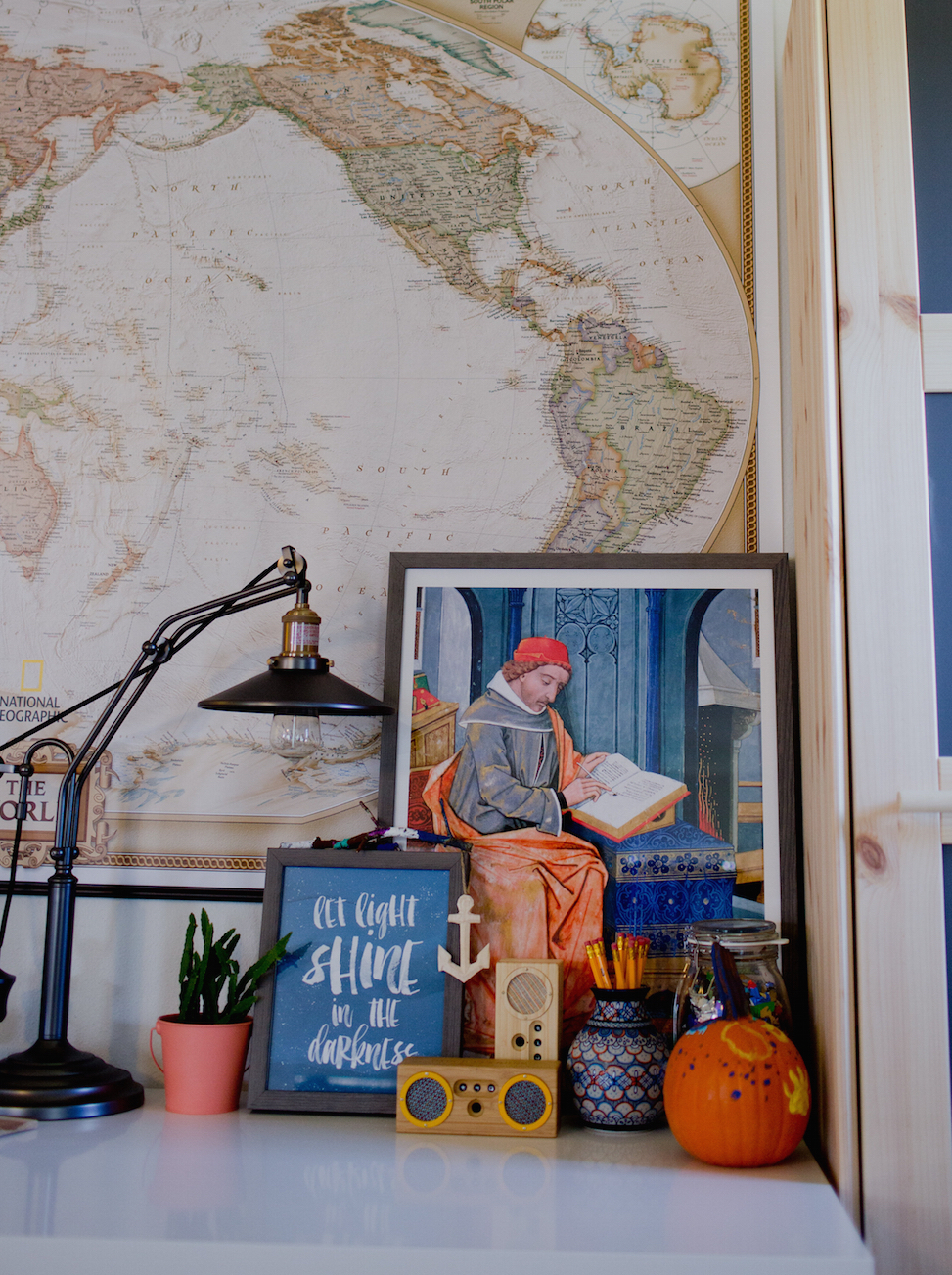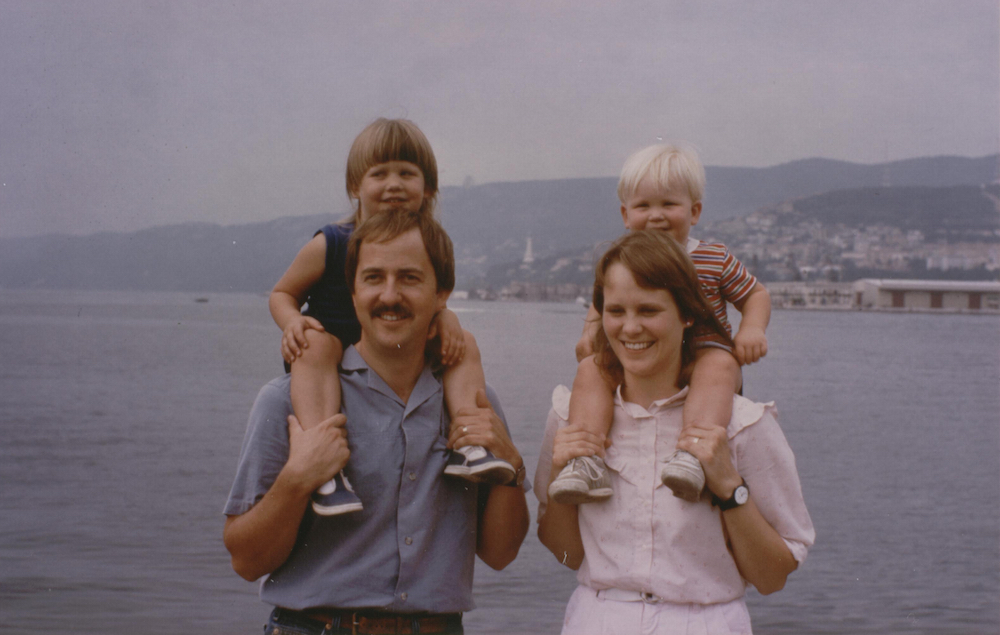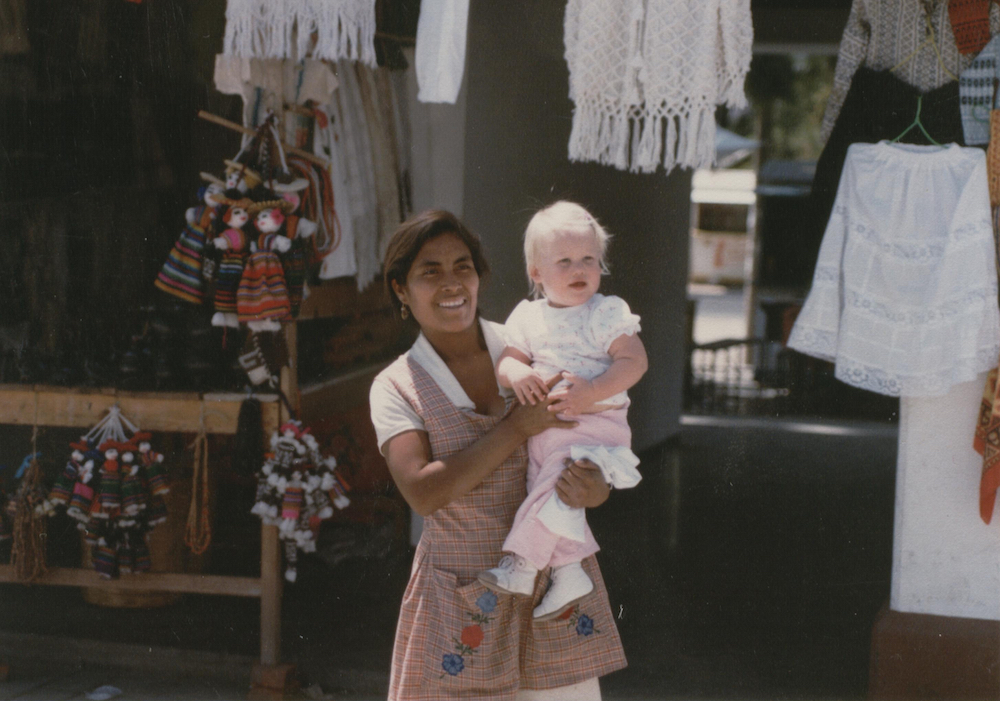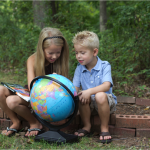I’ve always loved maps -- the delicate wandering lines, the stars and circles hovering over city centers, the softly-worn paper folds creating ridges and peaks where the creases bisect latitude and longitude. Even the mysterious names themselves have a cadence, unknown yet familiar, like the rivers running this way and that way through the quadrants.
Maps are mathematical, and brimming with detail. A precise map, after all, represents distance. There are jagged borders perfectly measured, scales and legends, imaginary lines crisscrossing the world into a grid, and even sections dividing up the globe into tidy little time zones.
But there’s a second way to look at a map, too. And that’s to see a map not as representing mathematical distance, but human connection.
In our home, we surround ourselves with maps. There’s a tattered one on the back of the door, covered in dashes and dots of blue ink where we’ve marked out places encountered in our reading. In our living room there’s a big, expansive map that’s six feet wide. It’s large enough to lose myself, and I find my eyes wandering across the countries, imagining what life must be like next to a little tangle of thin blue rivers, wondering if a tiny speck of earth-colored island is inhabited, curious about what’s being eaten for lunch in another far-away corner.You see, when you realize every part of the world holds a human story, the distance fades away.
I grew up an ocean away from my extended family, always aware the great glittering Atlantic stretched out between us. Before I knew the sound of my grandparents’ voices, I could point out their home on a map. Maybe that’s why I love maps so much. Maybe it’s because I’ve never known the plot points as unknown spaces full of strangers, but as little pockets, holding collections of people I love. We share a continent now, but in my youngest years, the whole of my connection with my unseen family was wrapped up in the thin, squiggly lines tying one place to another. There wasn’t just paper under that little ink spot on the map, there was an old white house -- grandma and grandpa’s house -- marked by lace curtains and yellow lights, cinnamon and spaghetti.
And still today, my maps continue to connect me to people I wouldn’t otherwise know, people whose entire life is bustling, whirling, singing, working -- under the map dots. Maybe I’m so intrigued about what’s under the dots because I’ve spent I spent so much of my own life in countries and regions people view as just obscure dots on the map. But these places (Oaxaca, Mexico and Ljubljana in the former Yugoslavia) were my home. People called them home long before the first chapter of United States history was written, and they are home to thousands of people still.
The six-foot map above my desk continually puts things in perspective for me. Somehow, the larger I see the world stretched out before me, the smaller the selfish world orbiting my own head becomes. (It’s remarkable how quickly first-world complaints evaporate when viewed in light of not only history’s timeline, but geography’s expanse as well.) And as I look at the map, I can’t help but notice what a narrow swath, both chronologically and geographically, United States history has carved out. And I think to myself, time didn’t start here. History didn’t start here. Geography doesn’t stop here -- the ocean stretches out so much further. There’s so much more to know.
I wish everyone could see the world this way -- with every set of coordinates rich, alive, unique, humming with life and love and stories, and full of complexities. There’s so much under each little ink blot on the map, just waiting to be searched out and discovered and celebrated and truly known.
We should be pushing beyond, seeking to understand not only the world at large, but the world of cultures inside our own borders and our own neighborhoods. As Christians, there is no excuse! We should be the most global-minded of all citizens, rejoicing in and celebrating the diversity of this great world. Revelation 7:9 says, “After this I looked, and there before me was a great multitude that no one could count, from every nation, tribe, people and language standing before the throne and before the Lamb.” And I think of the one who is sitting on that throne, and it’s Jesus, fully God, fully Middle Eastern man!
“...Every nation, tribe, people and language…” This makes my heart swell; doesn’t it do that same thing to you? (It also makes me want to buy History / Bible / Literature F: Eastern Hemisphere for myself.) Oh, what a privilege to expand our horizons beyond just our familiar “sea to shining sea”, and embrace the richness of all that God’s created!
Image Credits: Images 1, 3 and 4: Jim Busakowski Images 2 and 5: Priscilla Barbosa Photography


